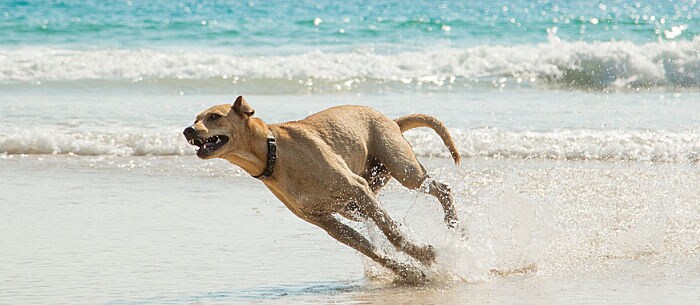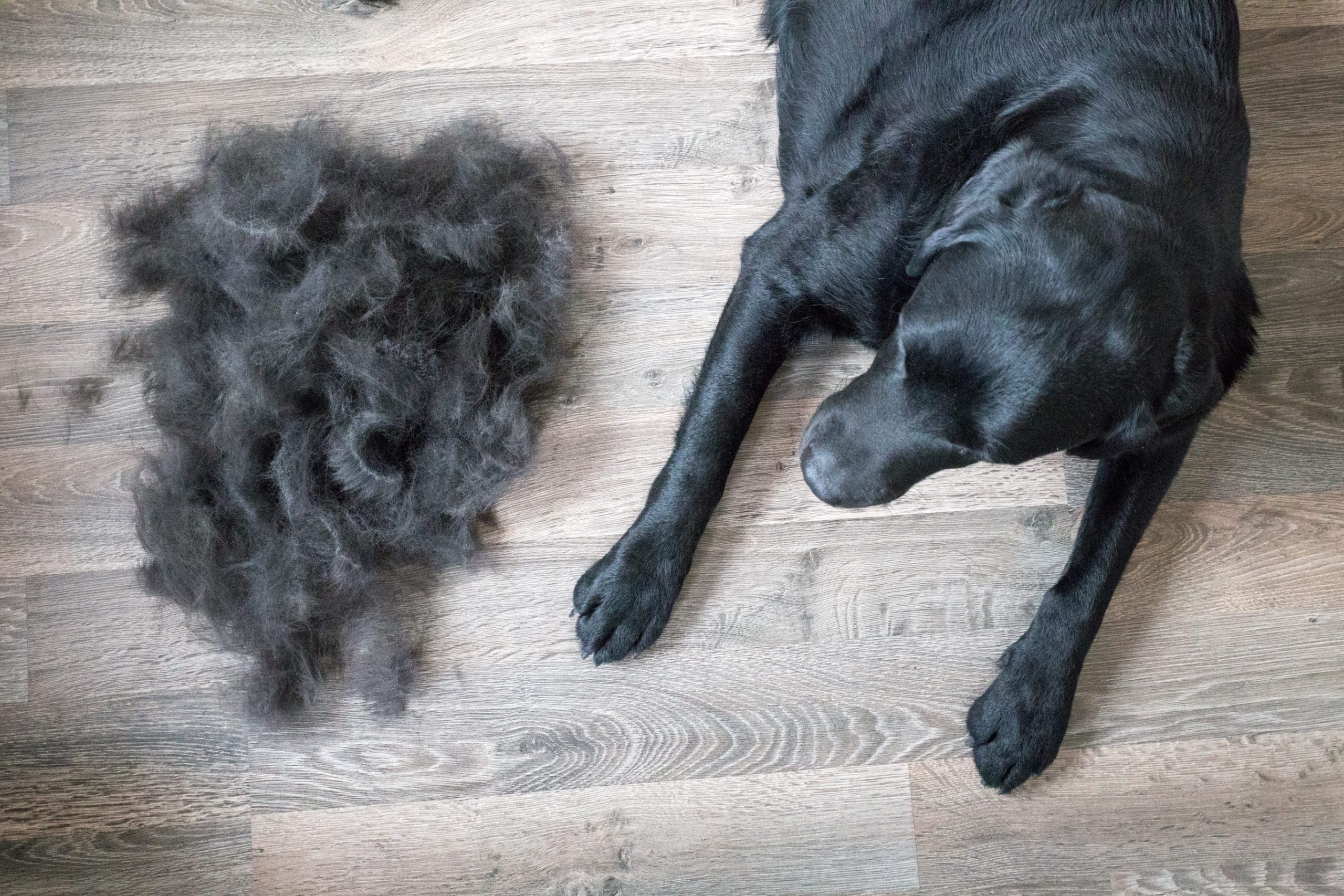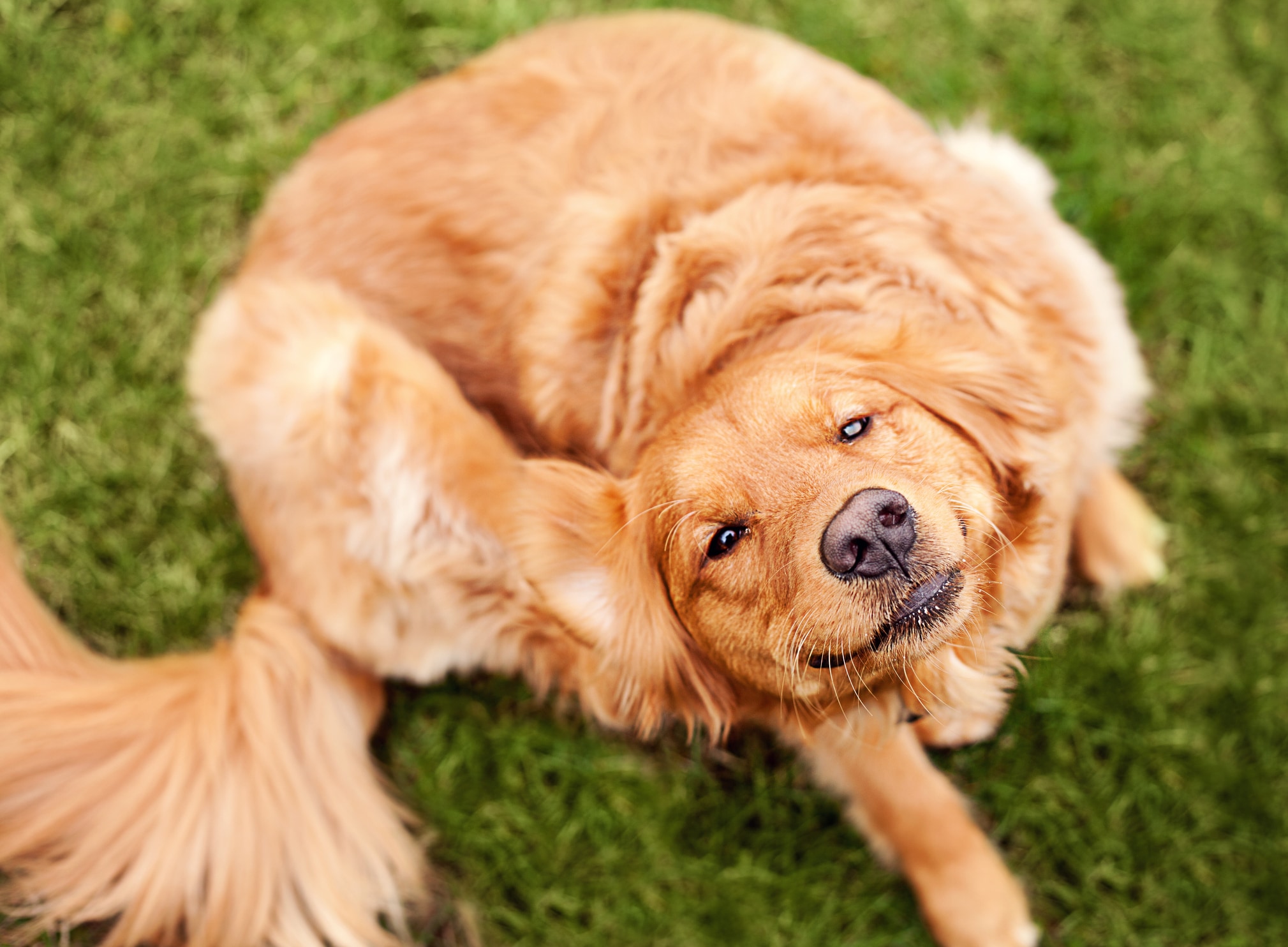Your dog spends a lot of time on his feet walking, playing fetch and having fun, and all that fun takes a toll on his sensitive paws. Unlike our feet, dog paws do provide some protection against the elements, but they still require gentle care. “Generally, the pads of the feet provide protection the way our shoes protect us. Yet, because the pads are made of living tissue, they are prone to insults such as cuts and splinters,” says veterinarian Dr. Lori Pasternak of Helping Hands Affordable Veterinary Surgery.
Here are some daily ways to keep a dog paw healthy:
1) Do Necessary Maintenance
Once a day, you should check your dog’s paws to make sure there isn’t any debris, such as pebbles, sand or burrs, in between the toes. Also, keep an eye out to see if your dog’s nails need a trim, which should be done about once a week. “Your veterinarian’s office can show you how to do this yourself — or even do it for you if you are not comfortable,” says veterinarian Dr. Louise Murray, a pet wellness lecturer and writer and the Vice President of the ASPCA. Whenever you cut your pup’s nails, you should also trim paw hair to avoid matting in between the toes. Simply trim it even with the pads.
2) Use Preventative Care
To reduce the risk of injury to your pup’s paws, be careful in public areas at all times. Keep an eye out for sharp objects, such as broken glass or untreated wood. Steer your dog clear of areas with sharp rocks or dangerous terrain. Once a day, do a quick scan of your own home and backyard to ensure they are free and clear of debris that could hurt your pet.
3) Avoid Hot Pavement
During the hot days of summer, it’s important to be cautious about where you walk your dog. Avoid hot surfaces, such as asphalt and sand, on very warm sunny days. If you wouldn’t want to walk on a surface barefoot in the heat, neither should your dog.
4) Watch Out for Snow and Ice
You should also use caution in the winter, when there is snow, ice or salt on the ground. Be sure to clean off ice melts and salt after a walk outdoors with a soft, damp cloth. “In extreme weather, you can protect paws with booties,” recommends Dr. Murray. Choose a type your dog tolerates and that stay on her feet well, and use them every day throughout the cold months.
5) Practice First Aid
Sometimes, the worst happens and your pooch suffers an injury. If the cut is small and shallow, clean it well with running water and apply a triple antibiotic ointment, such as Neosporin or Bacitracin. You can remove splinters with tweezers and apply ointment. For deeper or more extensive injuries, see your vet immediately. “The biggest problem with cuts and splinters is infection, because the bottom of the feet are constantly exposed to the environment,” warns Dr. Pasternak. Signs of infection include swelling and redness. During the healing process, cover the injury with a loose bandage and avoid exercise.
6) Stop Excessive Licking
If your dog licks his paws constantly, it’s important to stop that habit in its tracks. “Excessive dog paw licking can be caused by several problems — from simple boredom and anxiety (similar to a nail biter) to nursing aching, arthritic underlying bones,” says Dr. Pasternak. Check with your veterinarian to determine the underlying cause and discuss an appropriate treatment plan. In the meantime you can use an “Elizabethan” collar (a cone collar), a bite deterrent spray or ointment, or a sock or loose bandage.
And check out these 9 Ways to Know a Dogs Nose Needs Attention.
Keeping your dog’s paws healthy is essential for her overall well-being. Keep an eye on your pooch’s paws every day to ensure they stay in the best shape possible.
Rebecca Desfosse is a freelance writer specializing in parenting, family and pet care topics.





